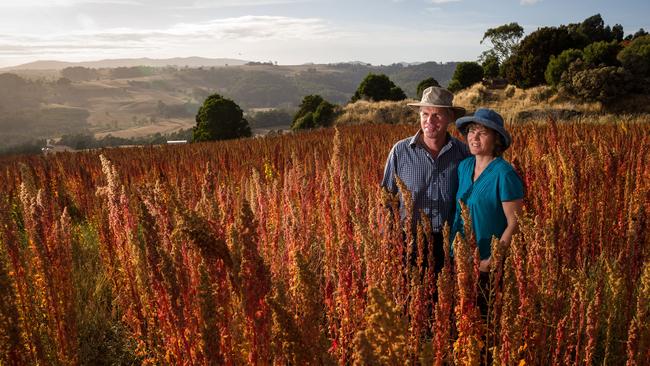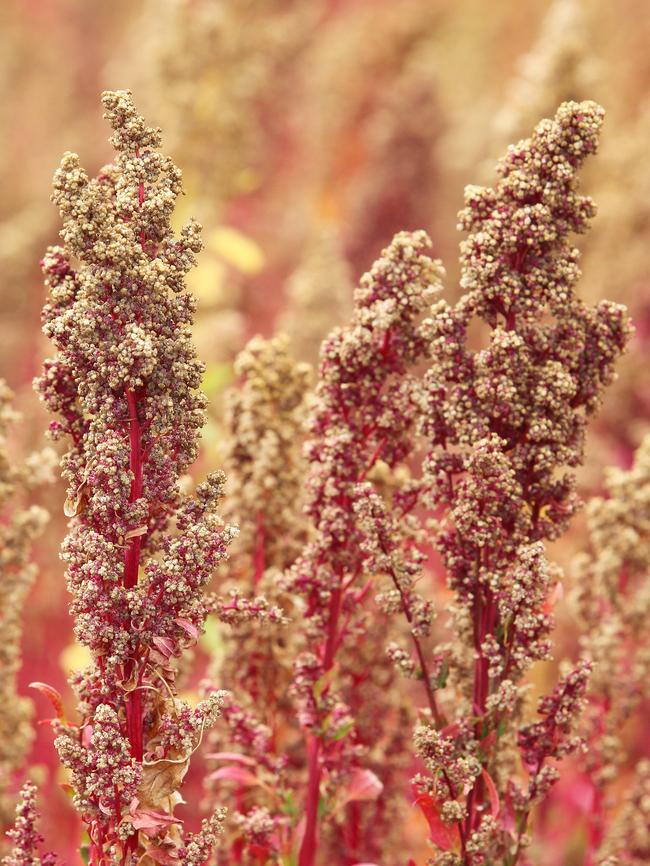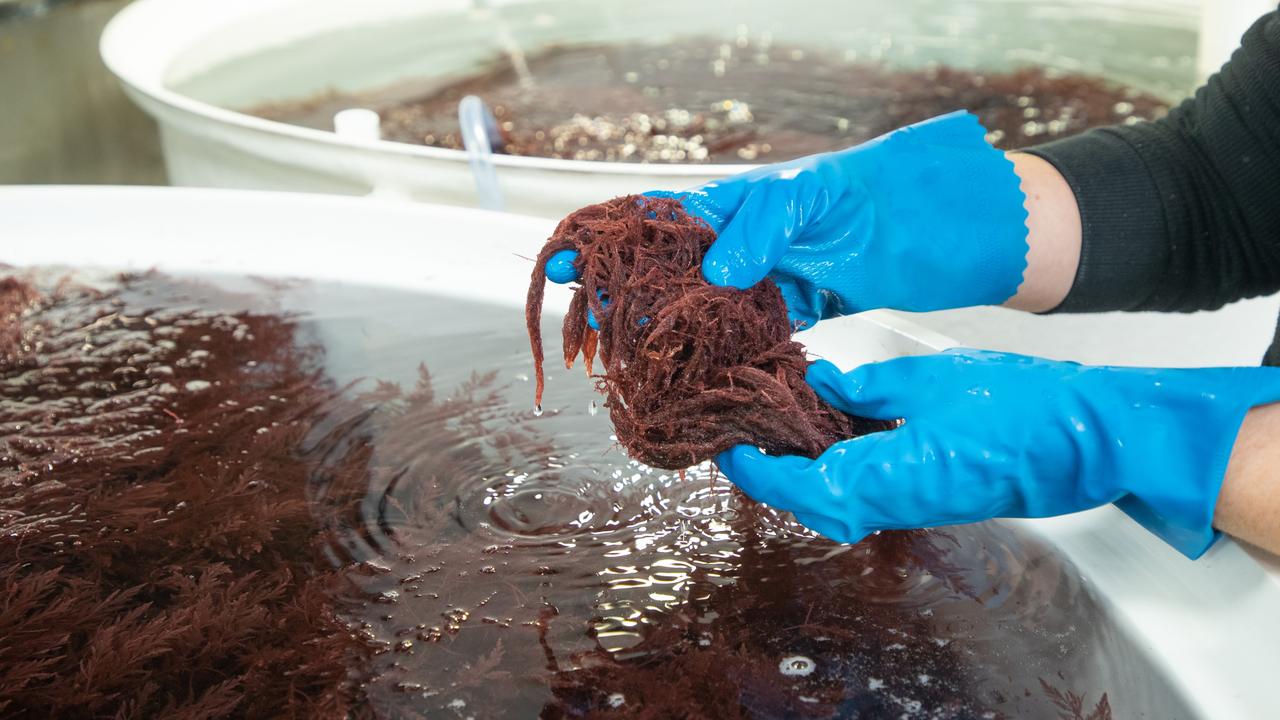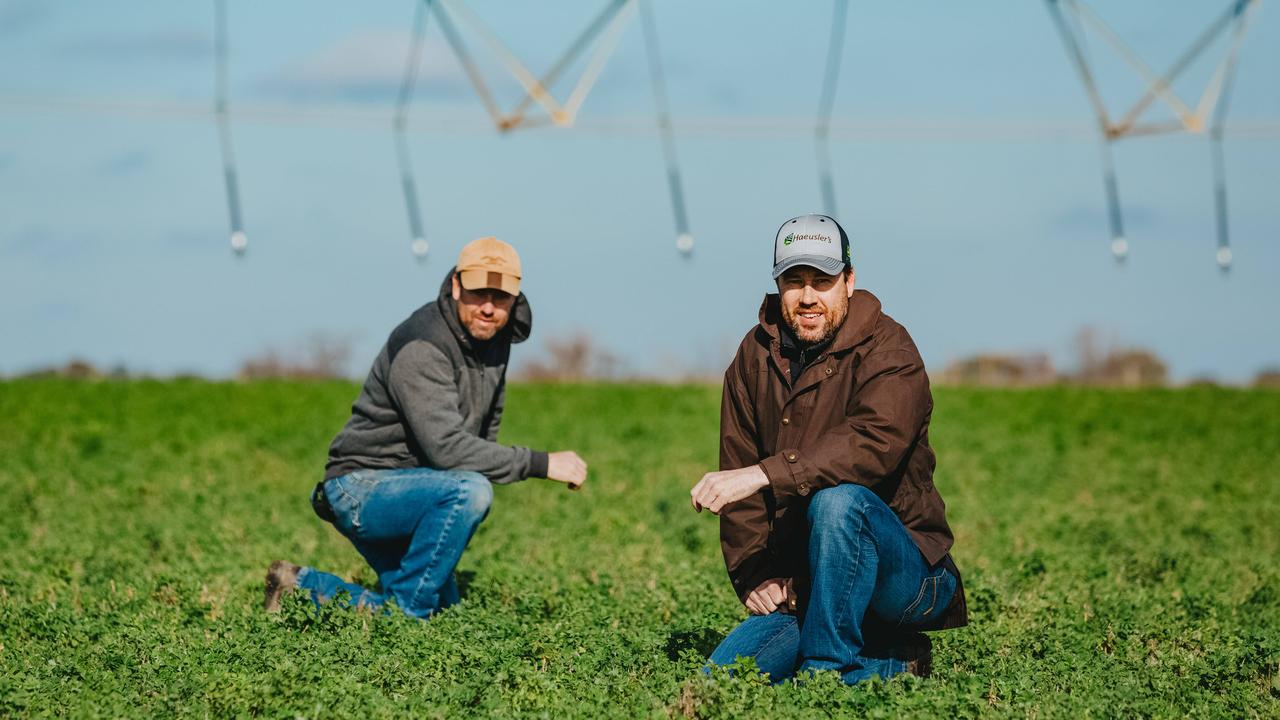Kindred Organics: Pioneers of quinoa keeping the craze alive
THE quinoa craze has settled, but pioneering Tasmanian growers are confident the crop has staying power.

THE Damen family has been on a long-running quinoa rollercoaster.
Dizzying price climbs started 10 years ago, just after Lauran, Henriette and their son, Peter, first planted quinoa on their 237-hectare property at Kindred, in northern Tasmania.
“Quinoa farming is definitely always exciting,” says Peter, 26, who works with his parents on the organically certified farm, where they also grow spelt, linseed, buckwheat and oats, and raise Black Angus cattle.
Exciting is an understatement. Within one year of the family planting their first crop in 2007, the world went ga-ga for the gluten-free pseudo-cereal.
While many think quinoa is a grain, it is actually a member of the goosefoot family, which includes chard and spinach. It has similar uses to grains, and its status as a superfood is linked to its nutritional value and high protein content.
“In 2008, prices went a bit ridiculous,” Peter says.
“Consumption has gone up a lot since 2007, but in the last three years it has sort of plateaued, and supply has caught up.”
When the Damens emigrated from the Netherlands to Tasmania in 2000, they were searching for fertile land where they could farm organically, and never intended on cornering the quinoa market.
“Dad was in the chemical-spraying industry in Holland for so long, he was sick of contract spraying and that’s why we started organic farming,” Peter says.
“In 2007 we started converting the land to organic and were looking for crops to grow. A friend gave us some quinoa seed.”
Initially the Damens didn’t know much about the crop, and learnt through trial and error. They discovered the cool, sunny Tasmanian climate suits quinoa, which is native to high-altitude plains in the Andes mountains of Peru and Bolivia.
They also found they were the only people growing the crop in Australia initially, so built their own processing facility and started selling under their Kindred Organics brand. Despite the softening price and growing supply from around the world, the Damens are confident quinoa’s popularity will last.
“We eat bucket-loads of quinoa,” Peter says “Every single dish you would usually have with rice or potatoes, we have it with quinoa instead. It’s a lot easier to cook, and quicker.”
|kindredorganics.com.au

2008
The year global quinoa consumption started to shoot up, with prices peaking in early 2014 when Australian importers were paying about $US7.50 a kilogram for imports from Peru, Bolivia and Ecuador.
$10KG
The top price the Damens received for their quinoa during its boom. “In the past two years prices have come down pretty hard,” Peter says.
“Supply has really increased around the world.
There is also a lot of organic product that has come on the market, and conventional price has come down dramatically as well.
50 HECTARES
The Damen family usually plants about 50 hectares of quinoa on their farm each year. This year, they will sow half as much because of lower prices.
“Quinoa is probably our largest crop by value, but we have a mix of all the other grains, so we don’t have all our eggs in one basket,” Peter says.
0 GRAVITY
In 1993 NASA identified quinoa as an excellent candidate to grow on long-term space missions for its high concentration of protein and potential for increased yields in controlled environments.
120 VARIETIES
According to the Whole Grains Council, there are more than 120 varieties of quinoa. Peter, Lauran and Henriette are experimenting with breeding 10 varieties to improve the crop’s productivity in Tasmania.
2 TONNES PER HECTARE
The Damens produce about two tonnes of quinoa per hectare — averaging about 100 tonnes a year. They sell it in 500g, 1kg, 5kg and 25kg bags. They also mill quinoa flour and are experimenting with puffed quinoa.
120 DAYS
Quinoa goes from seed to harvest in about 90-120 days, depending on climate. The Damens sow in spring and harvest in early autumn from about March. Quinoa needs long sunny days to grow, with temperatures no higher than 30C. Though it is drought-tolerant, it likes plenty of water, and does not like boggy soil. “Quinoa can last without water, but the plants don’t recover from it,” Peter says. The Damens use pivot irrigation, with water from their dams.
3 METRES
Quinoa’s magenta stalks can grow up to three metres tall, with large seed heads that can be almost any colour. The Damens cultivate varieties that grow to about two metres tall, for ease of harvesting and less weed competition.
“The plant goes from green to yellow to red to orange to brown,” Peter says. “It’s red just after it has finished flowering. Different varieties have different colours — purple, black, red, all sorts of yellows.”
100G PER ADULT
Consumption of quinoa in Australia has increased from nearly nothing in 2006, to about 100g per Australian adult annually, Peter says.
1 GRAM
Quinoa seeds are tiny and just one gram of quinoa seed can plant up to a 15m row. Similar to amaranth, quinoa prefers sandy loam that is well drained
95%
About 95 per cent of Kindred Organics’ quinoa is sold in Australia, through retailers in Tasmania and through wholesalers in other states. About 5 per cent is exported.


